In the final pitching session for 2025 Research Translation Competition, twelve groups pitched their ideas to a judging panel, with two successful groups awarded $75k and $25k for their research translation projects.
2025 Research Translation Competition winners
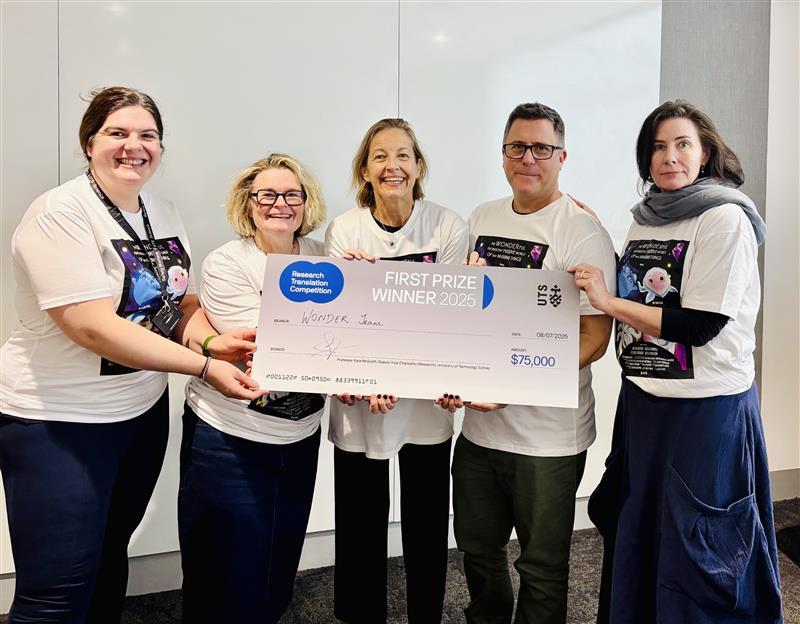
Caption
Dr Amy Bottomley, Kristi Street, A/Prof Louise Cole, Matthew Dabner and Prof Rachel Landers
The panel of judges included Deputy Vice-Chancellor (Research) Prof Kate McGrath, Pro Vice-Chancellor (Research) Prof Chris Turney, Director of UTS Research Office Dr Tania Bezzobs and UTS Director of Entrepreneurship Murray Hurps.
Transforming science through storytelling
First prize was awarded to Prof Rachel Landers, A/Prof Louise Cole, Dr Amy Bottomley, Kristi Street, Matthew Dabner and Matthew Gidney for their pitch on ‘The Wonderful, Fluorescent, Massive World of Tiny Invisible Things: Creating Transformative Science Stories for Children’.
The cross-faculty team brought together a collaboration of award-winning animators, filmmakers and scientists as they pitched their story-led approach to teaching science through a series of educational animations.
Evidence shows that a lack of positive role models continues to stand in the way of better participation, with a lack of female scientists in popular entertainment. You can’t be what you can’t see.
With women representing just 15% of the science, technology, engineering and maths (STEM) qualified workforce in Australia, this initiative aims to bridge the gap by inspiring young girls through engaging, relatable storytelling that demystifies complex scientific concepts and celebrates diverse role models in STEM.
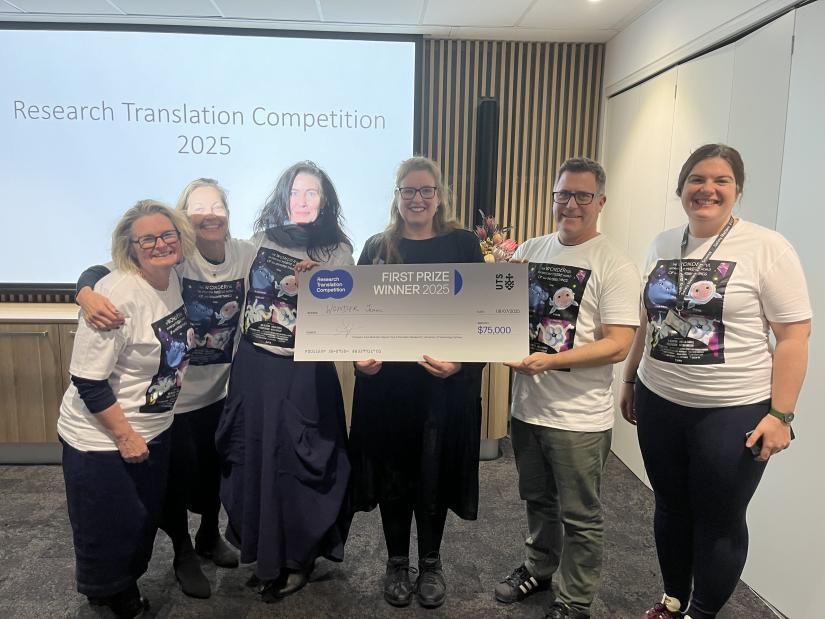
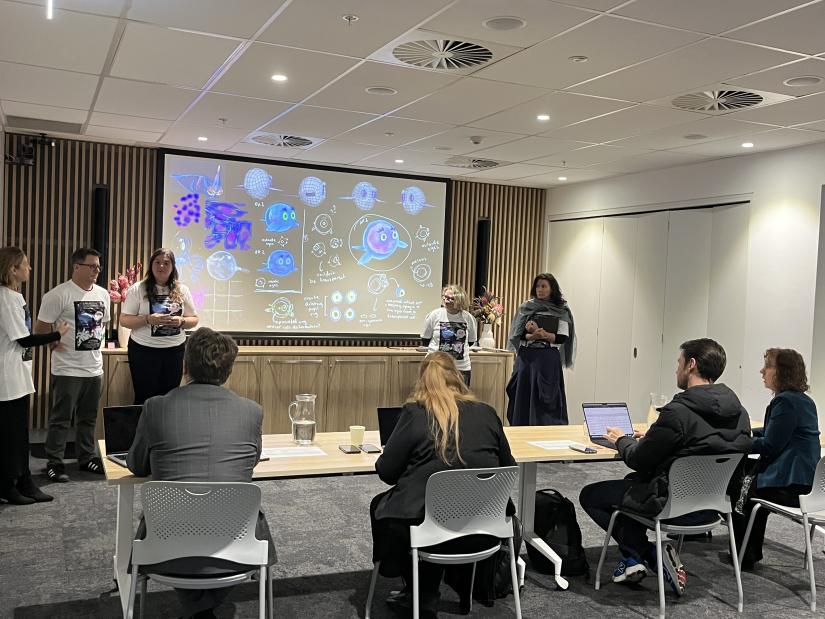
Amy said, “Evidence shows that a lack of positive role models continues to stand in the way of better participation, with a lack of female scientists in popular entertainment. You can’t be what you can’t see.”
“Our Australian Research Council funded research is tackling this problem head on by radically reimagining how science is taught,” Matthew said.
“Our research driven, user-tested and groundbreaking approach will make teaching science easy for primary school teachers, as well as making learning fun and impactful for students,” Amy said. “Our aim is to replicate for science what the research driven content of Sesame Street has done for reading and counting.”
Fertilising the future with human waste
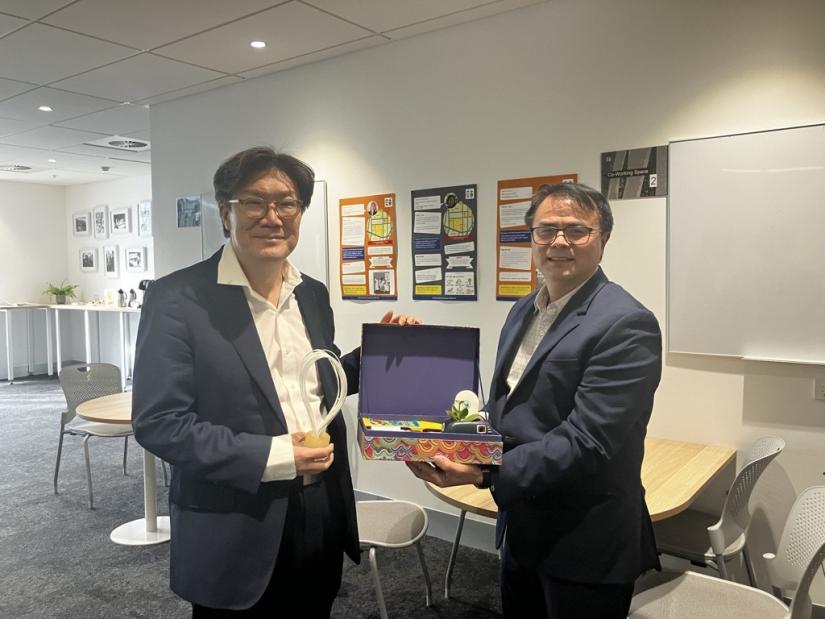
Second prize was awarded to Prof Ho Kyong Shon and Dr Sherub Phuntsho from the Australian Research Council Research Hub for Nutrients in a Circular Economy (ARC NiCE Hub) for their pitch ‘Transforming human waste into value-added fertilizer bio stimulant StimGro’.
To address the fact that Australia currently imports more than 90% of fertilisers from overseas, the team have developed an Australian-made organic fertiliser made from recycled human waste.
“Our nitrogen rich fertiliser has a better performance compared to other commercial fertilisers. It will also be much cheaper compared to commercial fertilisers currently on the market,” Ho Kyong said
“The impact is we can reduce wastewater treatment because we collect a lot of wasted nutrients which we convert to fertiliser. Our emission target is to create with sustainability.”
The impact is we can reduce wastewater treatment because we collect a lot of wasted nutrients which we convert to fertiliser. Our emission target is to create with sustainability.
Kate thanked competition participants and spoke about the importance of striking a balance between nerves and passion to develop an impactful pitch.
“The two projects that we selected as winners have some things in common. They are trying to solve long term problems for us, and those problems are both local, national and global in context,” Kate said.
“We have an opportunity through the two projects that we're supporting to not just tackle something that we are experiencing in Australia, but something the world is experiencing. They're very different, but they're equally exciting.”
Kate acknowledged the breadth and depth of work being done in research across the university and noted the diversity of pitch ideas in this year’s competition.
“I think this is a critically important learning process that we're going through with all of you. And so don't be disheartened if you're not number one or number two. Keep working at it. Please don't go away thinking ‘we didn't win’. There is a gem in all of the pitches shared today,” she said.
Kate concluded the session by thanking the Research Translation Competition organisers, all the groups that pitched and her fellow panellists.
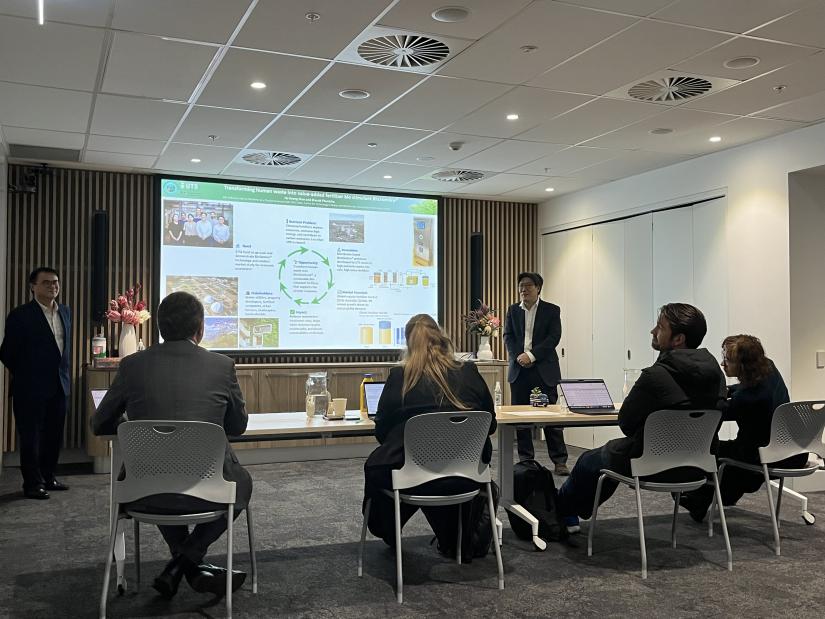
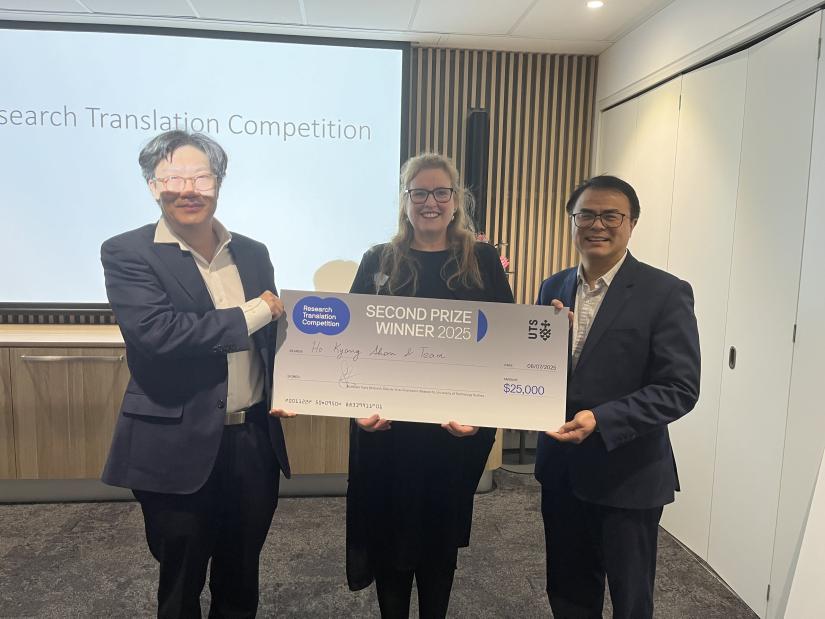
Strategic pitch development workshops
Competition participants underwent weekly workshops in the lead up to the final pitching session to refine their pitches and learn more about everything from patents to creating a value proposition.
In their first training session, they were joined by a leading patent attorney, Dr Michael Christie who shared the importance of a timeline for obtaining patents and creating a provisional application.
“The relevance of the provisional application is that it sets what's called a priority date, the date on which your patent application will ultimately be examined against prior art - anything that is publicly disclosed or available that might be relevant to a patent’s claim before an invention’s priority date,” Michael explained.
You need to strike a balance between when to file a provisional application. That’s the balancing act.
Michael spoke about the importance of including as much data and information as possible in your provisional application.
However, he warned that “you need to strike a balance between when to file a provisional application. That’s the balancing act.”
In an interactive session, Partner and Co-Founder of Cruxes Innovation, Emily Chang, led participants through a step-by-step process to define value proposition as they workshopped their own projects.
Emily spoke about crafting an impact vision statement in the process of defining a value proposition.
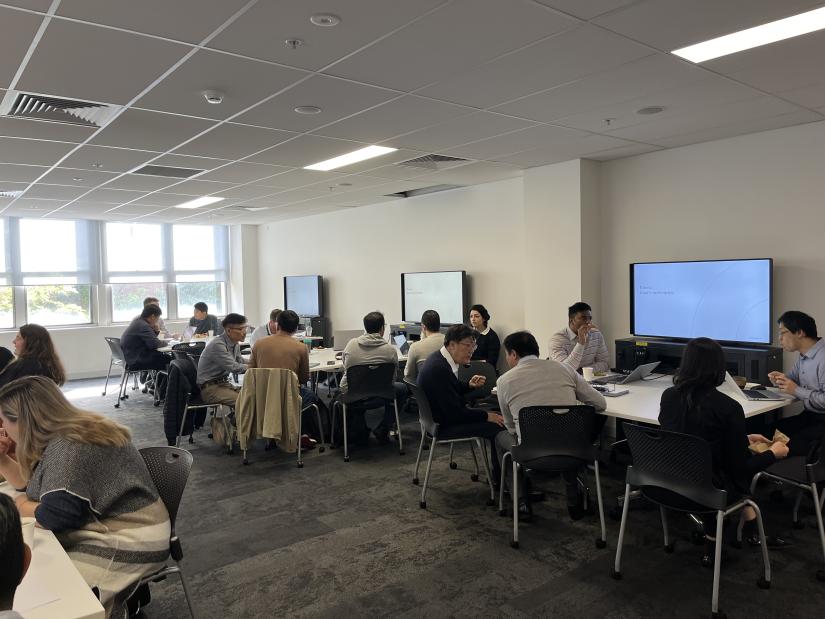
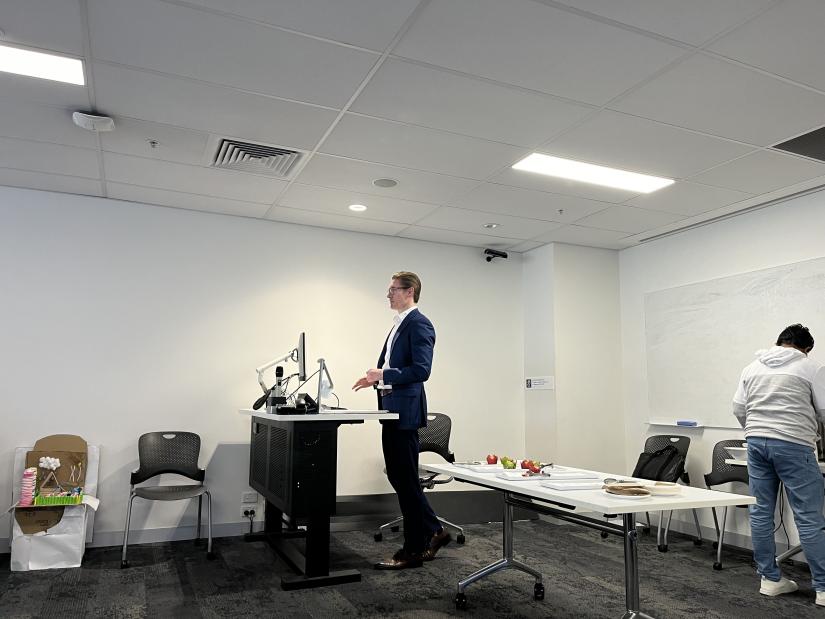
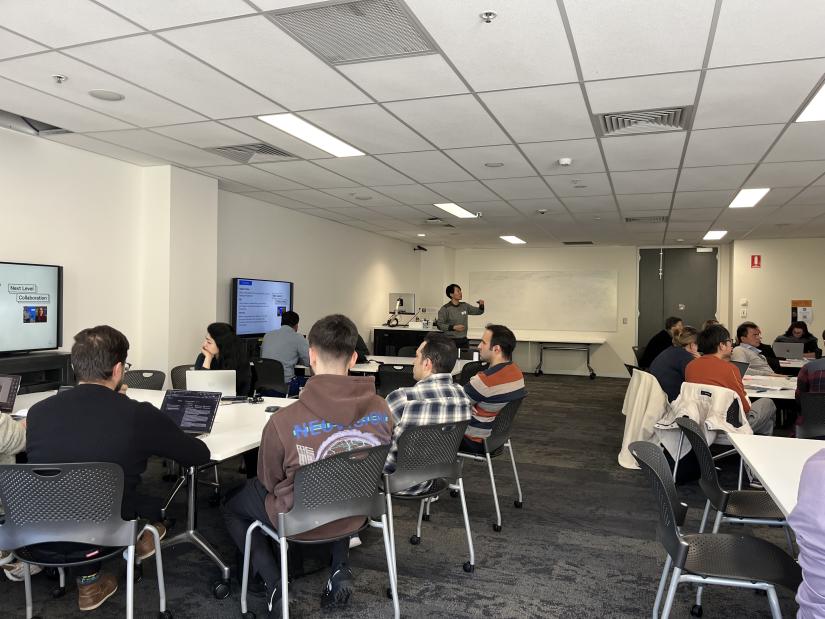
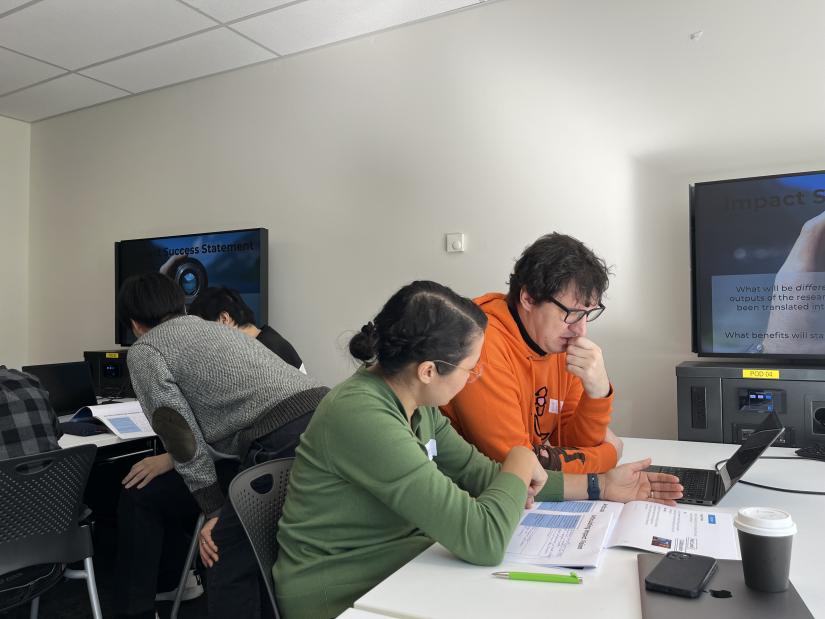
“The principle I usually try to apply is making sure you are describing your idea in a way that is accessible. It’s not about simplifying it, but making it accessible,” she said.
“The impact vision statement is the entrée. You don’t need to take them through the 7-course meal. It is inviting you to take yourself out of the research and move yourself into that future state. Why would people care about this idea or be excited?”
The principle I usually try to apply is making sure you are describing your idea in a way that is accessible. It’s not about simplifying it, but making it accessible.
Venture builder at Sydney University, Natasha Rawlings delivered a pitch presentation workshop on how to create the perfect pitch.
She spoke about why investors find it hard to talk to researchers, “They don’t focus on what I care about (making money). They didn’t talk about problems or customers, and they didn’t “sell” me on their idea. This can all be learnt.”
“Every conversation with an investor, every grant application, will go better if you have spoken to customers,” she said.
Natasha gave examples of what investors look for in a pitch including things such as proof customers will buy the product, market opportunity and competition and proof of concept or a working prototype.
About the UTS Research Translation Competition
The annual UTS Research Translation Competition provides a pathway for novel research to be translated into impact. Selected teams have a chance to participate in workshops covering IP basics, value propositions, business models and pitch preparation before presenting their translation plan to a panel.
Attend research translation IP workshops
Attend Intellectual Property (IP) workshops in August to learn more about how to protect your invention and the timeline and process for obtaining a patent. No registration required - just come along!
- Workshop 1:
When: Tuesday 19 August, 1pm – 2:30pm
Where: RES Hub event space, CB02.05.250
- Workshop 2:
When: Wednesday 27 August, 1pm – 2:30pm
Where: the grid room, CB04.05.430